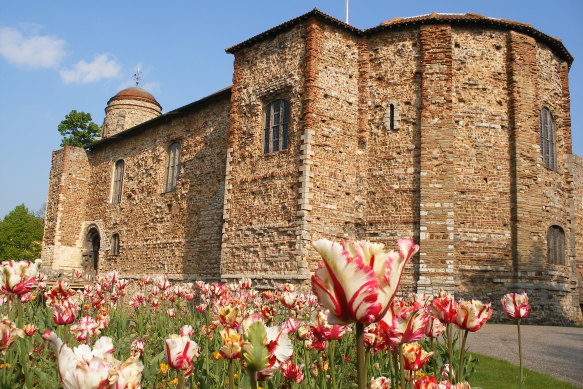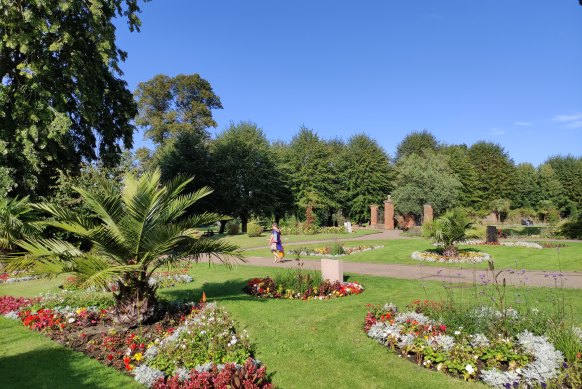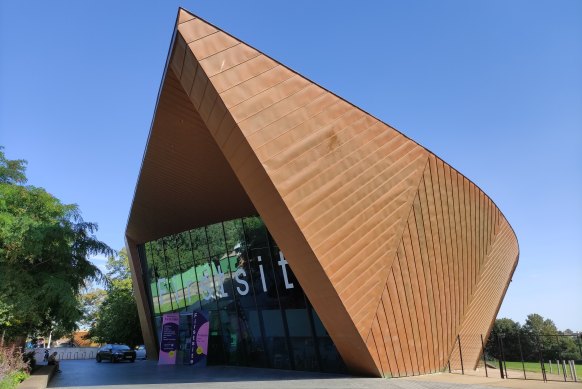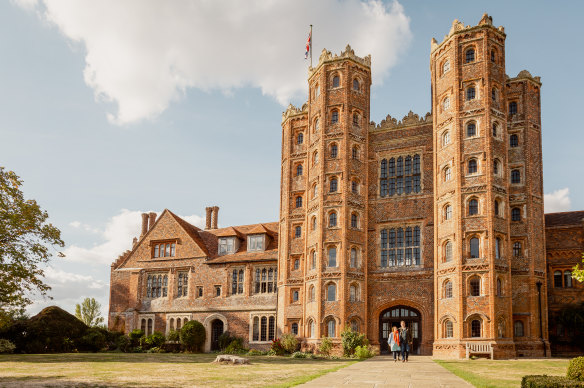Britain’s oldest city? It’s not London
Before Londinium – today’s London – ruled the roost, Camulodunum was the thriving capital of Roman occupied Britain. Founded in AD43 by emperor Claudius, it boasted the island’s first classical temple, theatres and senate house. But after it was brutally destroyed by Queen Boudica’s marauding Iceni tribe in AD61, the Romans relocated their colonia (capital) 100 kilometres down the road to Londinium.

Colchester Castle, where you’ll find gold and silver jewellery discovered under a department store on Colchester’s High Street in 2014.
I’m trying to picture the drama, chaos and smouldering ashes of that era as I stroll through the attractive, rolling green park at the historic heart of Camulodunum – or Colchester, as it became. Having long claimed to be “Britain’s oldest recorded town”, it now bills itself as “Britain’s First City” thanks to another Queen, the late Elizabeth II, with Her Majesty’s Platinum Jubilee gifting city status to this Essex commuter hub.
About an hour north-east of London by train, Colchester offers visitors a change of pace and scenery with fascinating history to boot. On a balmy summer’s afternoon, people young and old are lolling about, reading books, chatting and having picnics beside flower beds, oak and maple trees and Roman archaeological ruins in the city’s Castle Park. Divided by the gently flowing River Colne, the park takes its name from its superbly preserved hilltop fortress, constructed in the late 11th century by another set of foreign invaders, William the Conqueror’s Normans.
Inside the castle, intriguing exhibits include a vase depicting Roman gladiators, and gold and silver jewellery found under a department store on Colchester’s High Street in 2014. It’s believed the hoard was stashed by a wealthy Roman woman during the Boudican Revolt. Follow castle guides into the vaults to glimpse the building’s foundations – the remains of the Temple of Claudius – and enjoy interactive activities like firing a replica ballista (an ancient missile launcher) and steering a chariot.
The castle roof grants a nice overview of Colchester, which, while never regaining its pre-eminence post-Boudica, was rebuilt and expanded under the Romans. A 20-minute walk south of the castle, there’s a visitor centre by the relics of Britain’s only known Roman circus. Excavated in 2004, it dates from the 2nd century AD and hosted chariot races before 8000 spectators.

Colchester Castle Park in the Roman capital.Credit: Steve McKenna
Behind Colchester’s moderately bustling high street, with its Edwardian baroque town hall, narrow lanes bulge with food, drink and shopping options. You’ll also find quaint, colourfully painted houses, especially in the Dutch Quarter, named after the medieval weavers that emigrated here from across the North Sea.
Seek out the abandoned, hauntingly beautiful St Botolph’s Priory. Built by the Normans with recycled Roman bricks, it was badly damaged in the English Civil War, when Parliamentary and Royalist forces clashed here during a 73-day siege in 1648. The Castle Park staged a (shortened) siege re-enactment in August, with 500 costumed actors and air crackling with musket and cannon fire. You’ll see real Civil War bullet holes at the half-timbered Old Siege House, now a smart bar-brasserie serving modern British-European dishes, afternoon teas and Sunday roasts.

Firstsite – Colchester’s Rafael Vinoly designed contemporary arts space for films, exhibitions and even a Roman mosaic.Credit: Steve McKenna
Also seizing the attention in Colchester is Firstsite, a Rafael Vinoly-designed contemporary arts space with temporary exhibitions, film screenings and a Roman mosaic under glass panels. Check the listings here and at the Mercury – a theatre by the colossal redbrick Jumbo Water Tower – and at Colchester Arts Centre, where Blur played an intimate comeback gig in May. The band’s frontman, Damon Albarn, spent his childhood in London and Colchester.
Instead of rushing back to the capital, consider sticking around. Hire a car to tour Colchester’s leafy, idyllic countryside, which inspired the great landscape painter, John Constable. Branch out to Layer Marney, a handsome Tudor pile, the seaside towns of the “Essex Sunshine Coast” and the tidal island of Mersea, where rustic BYO eateries entice with fresh seafood platters, including Colchester’s revered oysters. Harvested since ancient times, they’re famously plump and juicy, earning the praise of everyone from (Roman writer) Pliny the Elder to Gordon Ramsay.

Branch out to Layer Marney, a handsome Tudor pile.Credit: Steve McKenna
THE DETAILS
VISIT
There are usually about four trains an hour between London Liverpool Street and Colchester, with single fares from £10 ($19). See greateranglia.co.uk
STAY
A restored 500-year-old High Street coaching inn, the George Hotel has rooms from around £80 ($153). See suryahotels.co.uk/thegeorgehotel
MORE
visitcolchester.com
visitessex.com
visitbritain.com
The writer travelled at his own expense.
Sign up for the Traveller Deals newsletter
Get exclusive travel deals delivered straight to your inbox. Sign up now.